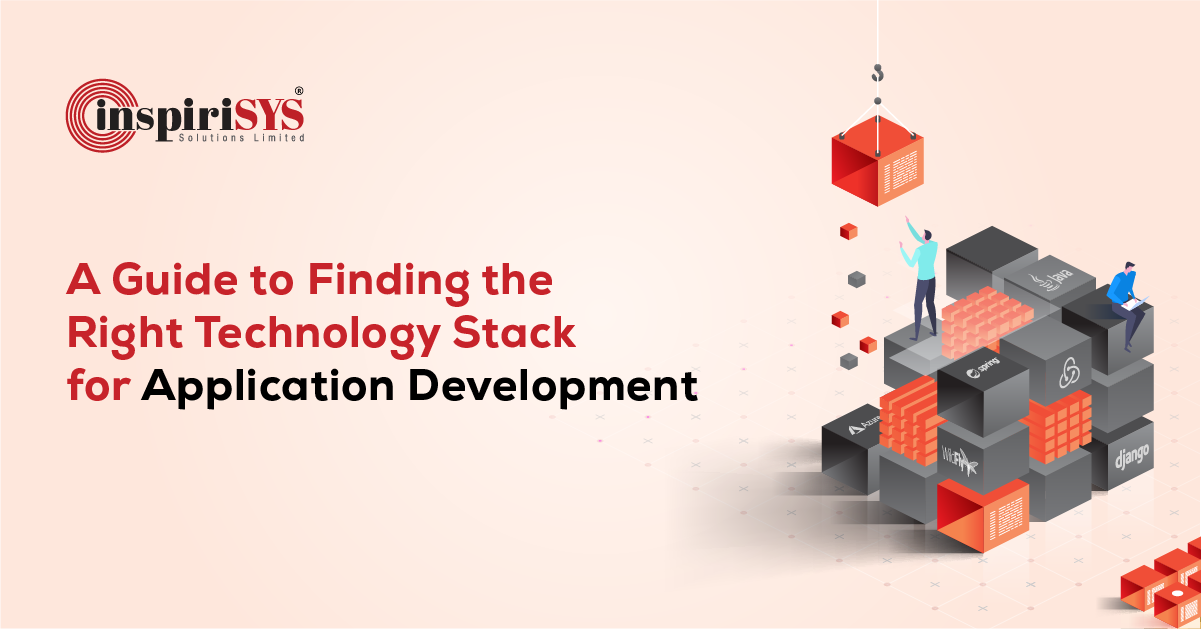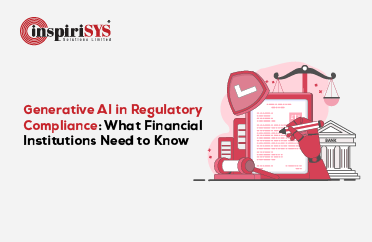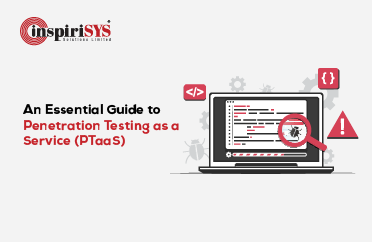Have you committed to developing a high-quality software solution or application? You're on the right page to determine how to choose a suitable technology stack. Building a powerful digital product (website/web application) requires the necessary tools and respective software that decide the success of a project. One of the primary tasks before creating a project lifecycle is to select the best stack that must reduce all complexities while tailoring a product.
Using the right tech stack can easily bring out the expected results and meet all customer needs, which is key to any project's success. A software experience is built, deployed, and maintained for consistency with a technology stack that comprises all specific requirements.
An effective Software Development Lifecycle (SDLC) always requires a tech stack that is cost-effective, flexible, scalable, and easy to set up. Hence, it is obvious that the perfect tech stack can make a lot of positive differences. While there are several stack options available in the market, it can be tedious when you start choosing among different stacks. However, we are here to help you in making that choice.
If you are new to software development and finding your way to becoming a promising developer, the next few sections are tailored for you. Let's know the basics of the technology stack and the development process before reaching the guide to choosing a tech stack.
Note: skip to the later part (Guide to Choosing the best technology stack) if you are a seasoned software developer.
Technology stack
A tech stack is a set of software tools used by developers and engineers when building a web or mobile application. All software projects have their foundation laid with a tech stack that comprises all necessary programming languages, frameworks, and tools. Every item available in each layer of a tech stack plays an important role during the development of a custom web or mobile application. Next, let's get into further detail on how a tech stack works.
Process of Web Application Development
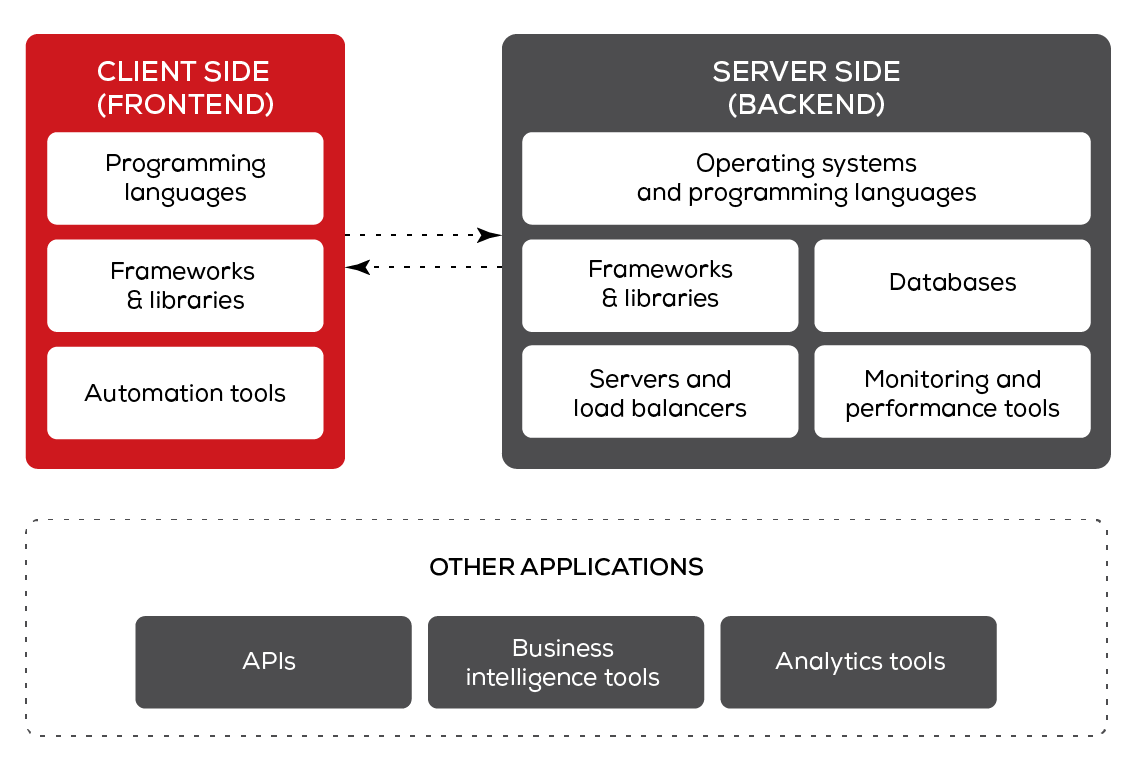
There are two sides to any website or web application, as you can see in the above picture.
Front-end Technology Stack
First, there is the client side of the product, which is used by all users for interactions. This is the visible side that is accessed for performing all actions of a solution.
The job of a front-end developer is to use programming languages to link both design and technology together for a smooth user experience.
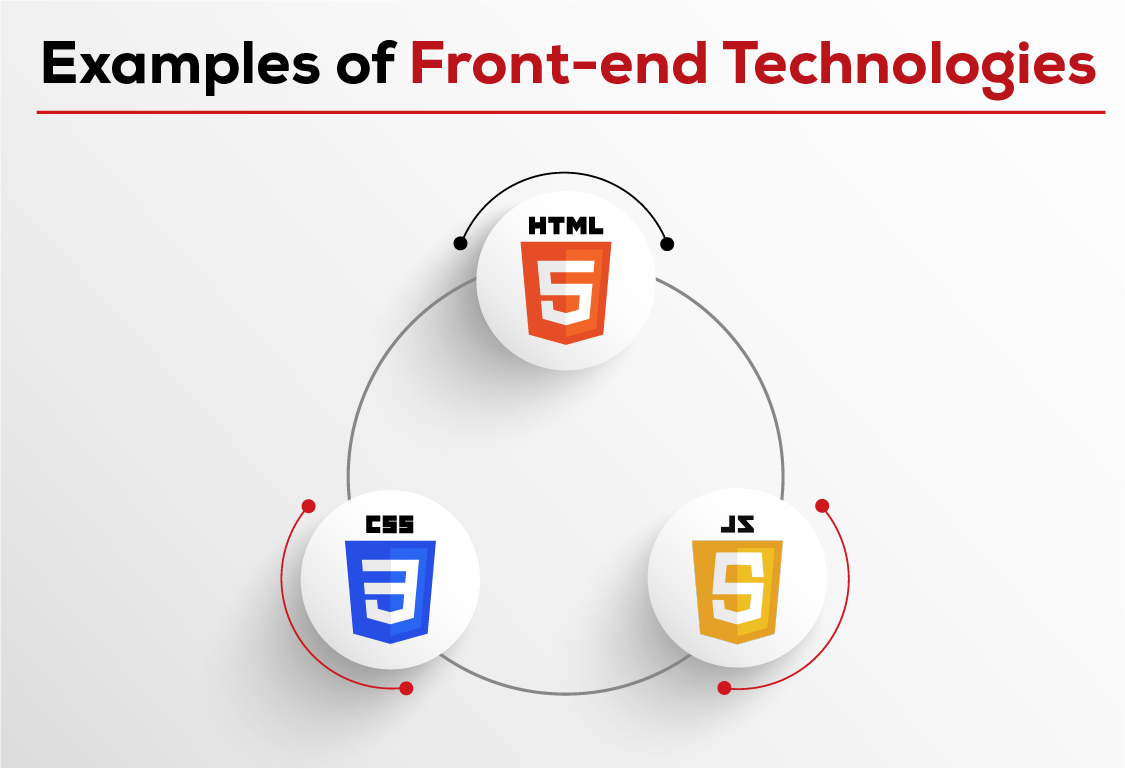
Back-end Technology Stack
Secondly, there is the server side, which is responsible for operating the whole product from the backend. Programmers use several technologies while developing the background technology, and the array of technologies used is referred to as a stack. Storing, handling, and processing data are the major tasks of the backend technology.
Engineers who work on building the backend use frameworks, servers, and databases to design software architecture and logic.
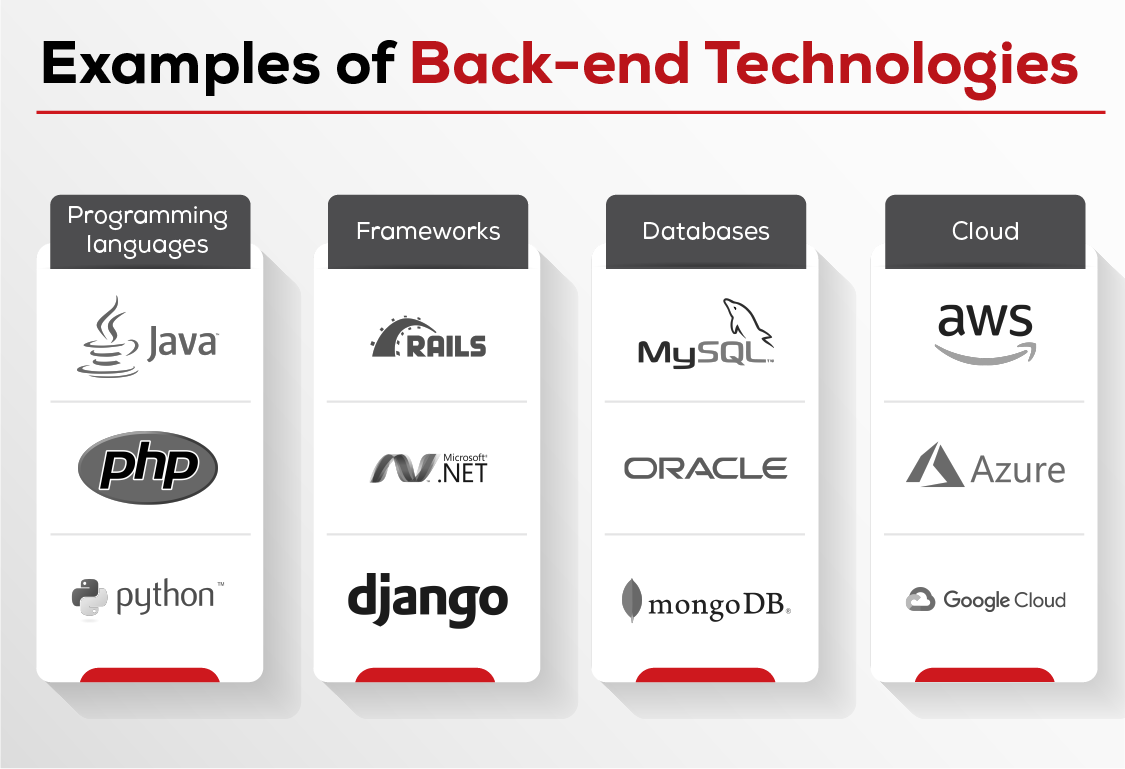
A famous survey by Stack Overflow gives us the below-given graph that clearly shows what programming, scripting, and markup languages are used by the majority of front-end and back-end developers.
Source: https://survey.stackoverflow.co/2022/#most-popular-technologies-language-prof
Guide to Choosing the Best Technology Stack
Now that you're clear about the process of building a whole web application or website, it's time we guide you on choosing the best technology stack. The following are the important factors you must consider while picking the right stack for your project.
1. Project Requirements:
Project requirements are a critical factor to consider when selecting a technology stack. The technology stack you choose should align with the project's requirements to ensure that you can deliver a high-quality product that meets your users' needs. Here is a small list of project requirements that are important to be considered:
-
Functionality: Identify the features and functionalities that the project needs to provide. This will help you determine what technologies are necessary to support those features.
-
Integration: Determine if the project needs to integrate with other systems or tools. Choose a technology stack that supports the required integrations.
-
User Experience: Consider the project's user experiences requirements, such as the design, interface, and accessibility. Choose a technology stack that supports the required user experience features.
2. Scalability
The next important consideration must be scalability when choosing a technology stack for a project. A scalable technology stack can accommodate growth and handle increased traffic without suffering from performance issues or downtime.
Select a stack that can welcome new and necessary features that will ensure your product withstands any unexpected situations. For instance, a sudden increase in the user base will require certain features to be added, and you must be ready with the best technology stack.
3. Development Time and Cost:
It is essential to concentrate on the time-to-market factor, which is crucial while working on projects with deadlines. Likewise, the more time you take to finish a project, the more expensive it will become. Evaluate the development time and cost associated with the technology stack. Some technologies may require more development time and resources, which could impact the project budget and timeline.
For example, it would be fitting to choose a tech stack like MERN to deliver a minimally viable product that has time constraints.
4. Team Expertise:
It is important to consider the familiarity and expertise of your development team with the technology stack you choose. If your team is familiar with a particular technology, they will be able to develop the project more quickly and with fewer errors. On the other hand, if the team has to learn a new technology, it can take longer and be more expensive.
5. Community Support:
The technology stack you select should have a robust community that provides support, updates, and resources. This will ensure that you can get help when you encounter problems during all phases of a project. That is, a tech stack with a large community implies you have access to a group of individuals who have encountered similar situations you might face in the future while building a web application. The reviews and documentation of a community are the most important factors to consider before selecting a technology stack.
6. Security:
Strong security must be another important criterion before you select a particular tech stack for building a web application. The below-given bullet points will give you a clear idea of why security plays a vital role in a tech stack.
-
Research any known vulnerabilities your tech stack has before considering it. Check with security advisors to avoid any security issues that might put your project at risk.
-
Ensure that the technologies you select have a track record of regular patching and updates to address any security issues.
-
Consider the built-in security features of each technology in your stack.
-
Look for established security libraries and frameworks that have been tested and vetted by the security community.
7. Performance of the Stack:
Finally, evaluate the performance of the technology stack. Check if it is fast enough to satisfy the product needs, and make sure its efficiency level is up to the mark. Handling the project's performance requirements is critical, as it determines the success or failure of your project. Hence, you need to select a tech stack that complements the software's performance.
Top 5 Popular Technology Stacks
While the above-mentioned criteria are imperative while selecting your tech stack, we also want you to know the best stacks that can help you successfully complete your project.
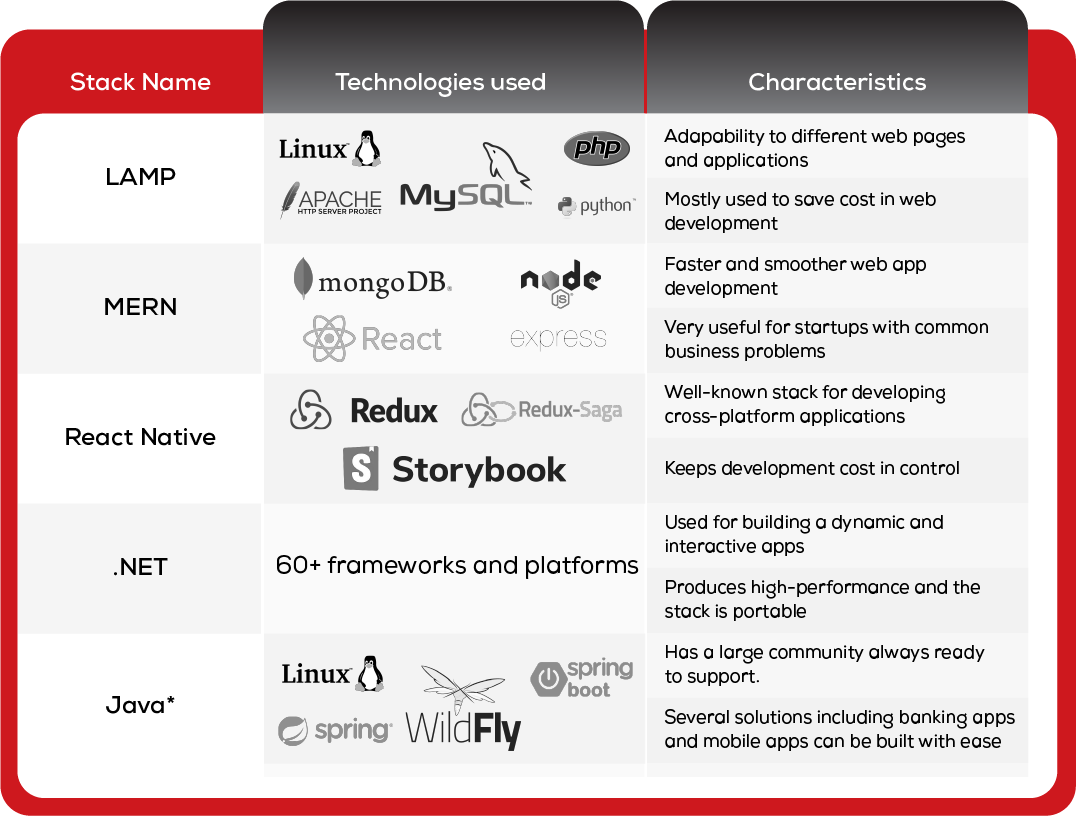
These are just a few suggestions from our side. With more research and analysis you can find the perfect stack for your project.
Closing thoughts
Though choosing a tech stack can consume more time and feel challenging, it is a crucial phase every development team or organization has to go through. Your clarity about the objectives of your product and its possible growth in the future will help a lot in narrowing down the options available in the market.
Sometimes hiring a separate team of tech specialists to select the appropriate stack can help you if you are too uncertain about the important decision you have to make. Always keep yourself updated and glancing at your competitors can also be useful. Take input from experts and choose the perfect stack that will best suit your organization's needs.


